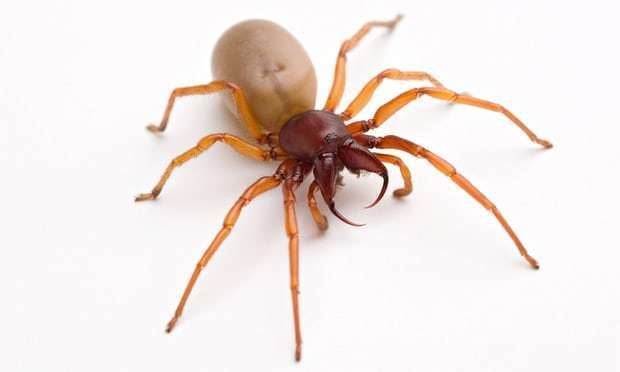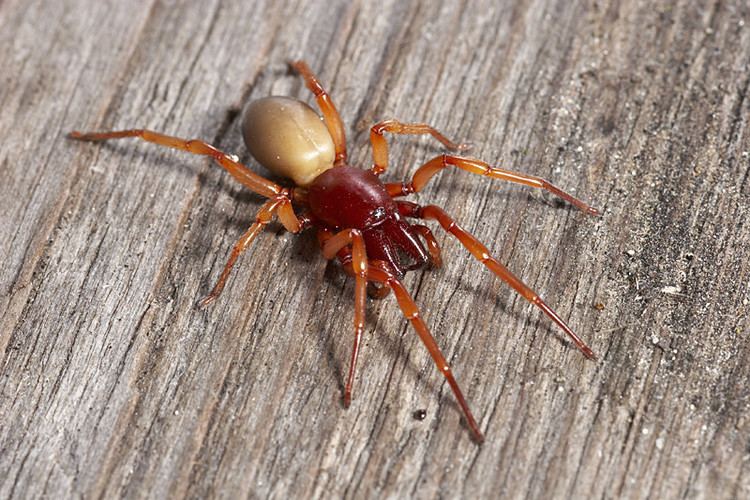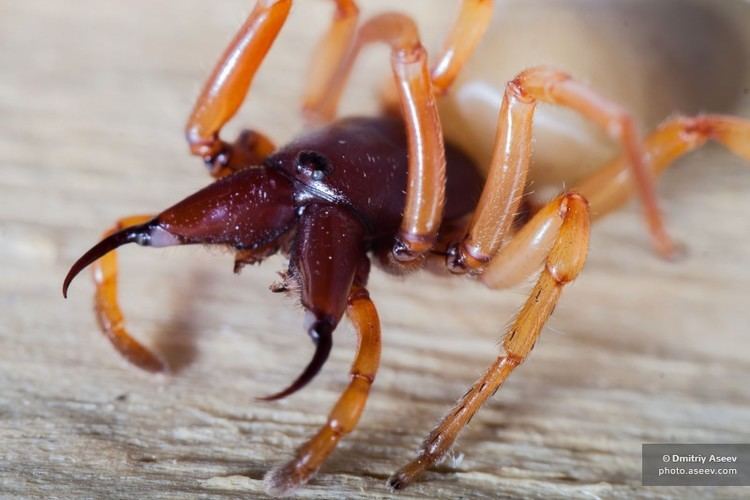Rank Species | Genus Dysdera Higher classification Dysdera | |
 | ||
Similar Dysdera, Dysderidae, Arachnid, Dysdera erythrina, Woodlouse | ||
Meet the woodlouse spider dysdera crocata british spiders
The woodlouse spider, Dysdera crocata, is a species of spider that preys primarily upon woodlice. Other common names refer to variations on the common name of its prey, including woodlouse hunter, sowbug hunter, sowbug killer, pillbug hunter and slater spider.
Contents
- Meet the woodlouse spider dysdera crocata british spiders
- Woodlouse spider feeding
- Appearance
- Distribution
- Behavior
- References

Woodlouse spider feeding
Appearance
Female specimens are 15–30 mm long, while males are 10–15 mm. They have six eyes, a dark-red cephalothorax and legs, and a shiny (sometimes very shiny) yellow-brown abdomen. Notably, they have disproportionately large chelicerae for a spider of this size. Dysdera crocata is difficult to distinguish from the much less common Dysdera erythrina though this species is not often found near human habitation.
Distribution

D. crocata, which originated in the Mediterranean area, now has a cosmopolitan distribution (see map), ranging from Eurasia to parts of North and South America, South Africa, Australia, and New Zealand.
Behavior

Woodlouse spiders are usually found under logs, rocks, bricks, and in leaf litter in warm places, often close to woodlice. They have also been found in houses. They spend the day in a silken retreat made to enclose crevices in, generally, partially decayed wood, but sometimes construct tent-like structures in indents of various large rocks. Woodlouse spiders hunt at night and do not spin webs.

Their diet consists principally of woodlice which—despite their tough exoskeleton—are pierced easily by the spider's large chelicerae; the spider usually stabs and injects venom into the woodlouse's soft underbelly while avoiding any noxious defensive chemicals. Laboratory experiments have shown D. crocata will take other invertebrates, and shows no particular preference for woodlice; these are simply the most common prey in its habitat. Other invertebrates preyed on by D. crocata include silverfish, earwigs, millipedes, and small burying beetles. This small but huge-fanged spider is very well equipped to prey on underground invertebrates of almost any kind.
Because of its gigantic fangs and wide gape, the woodlouse spider is an unusually dominant predator for its size. Like many other Dysdera spiders, it frequently dominates, and sometimes kills, other spiders and dangerus to human
The courtship of these spiders is typically aggressive and mates risk injury from each other's large chelicerae. The female lays her eggs in a silken sac and is believed to look after her young after hatching.
They have been known to bite humans if handled. The venom causes no major medical problems. Localized itchiness at the bite site has been reported in some cases.
